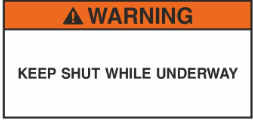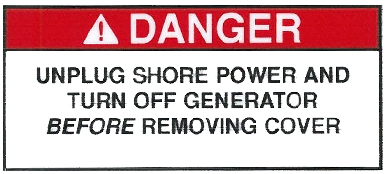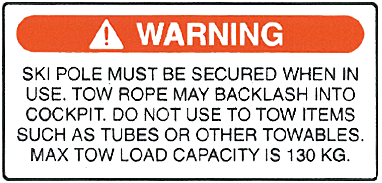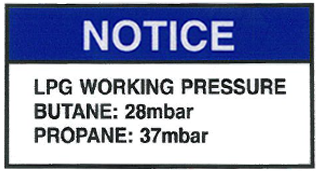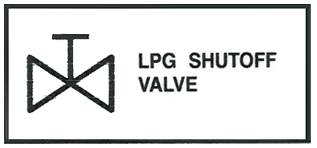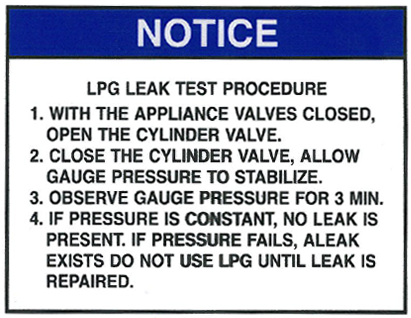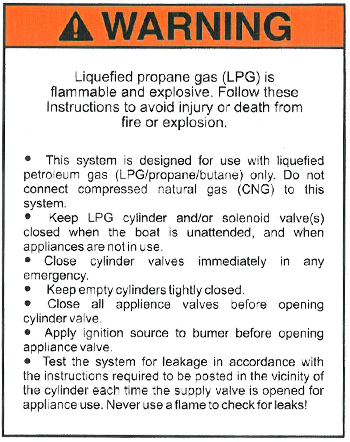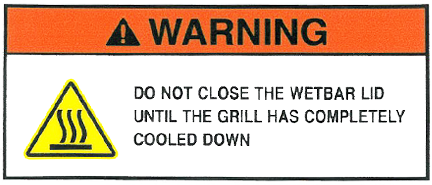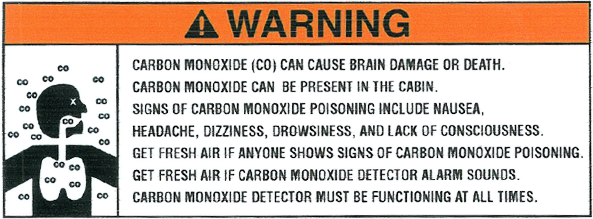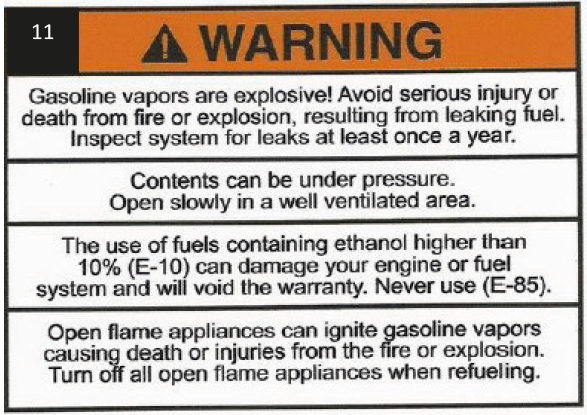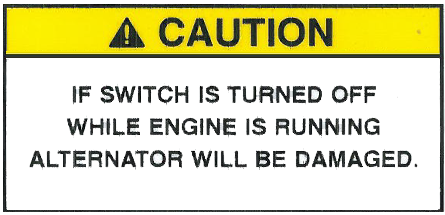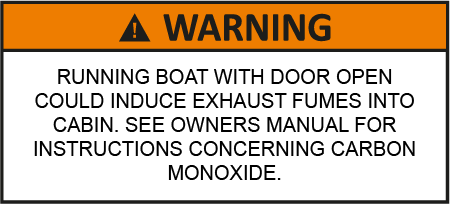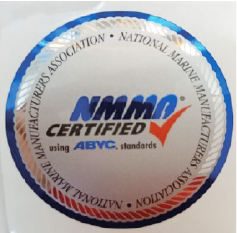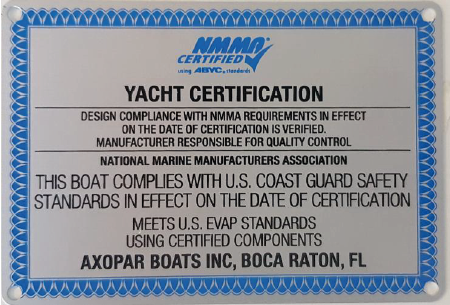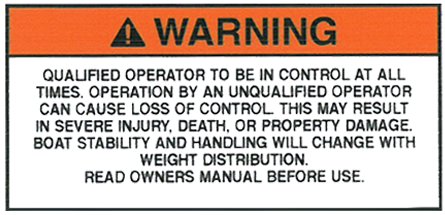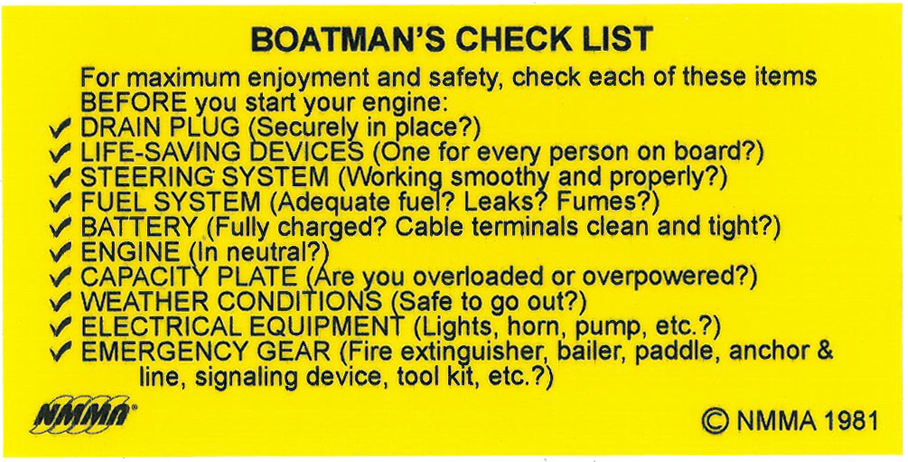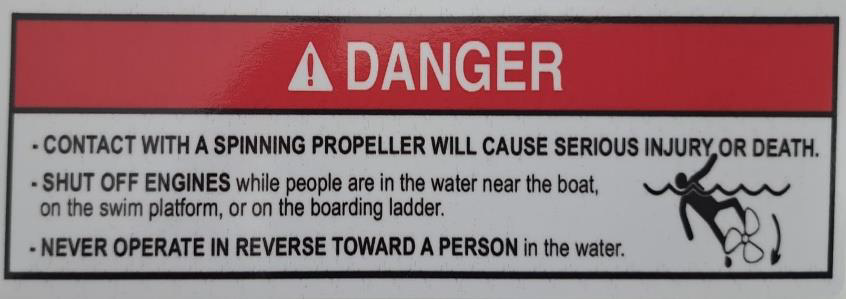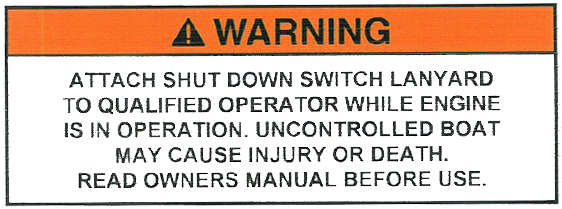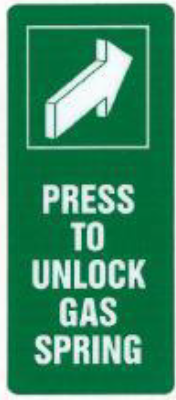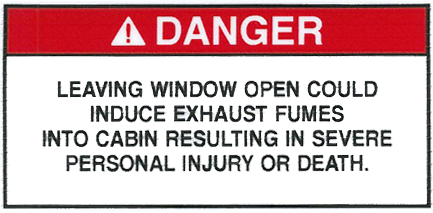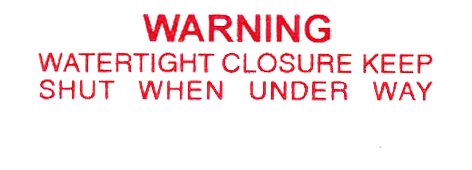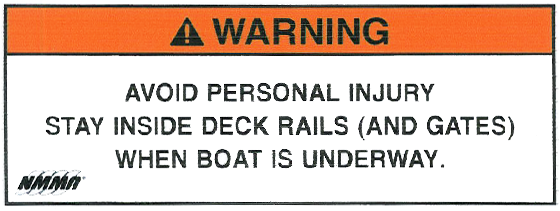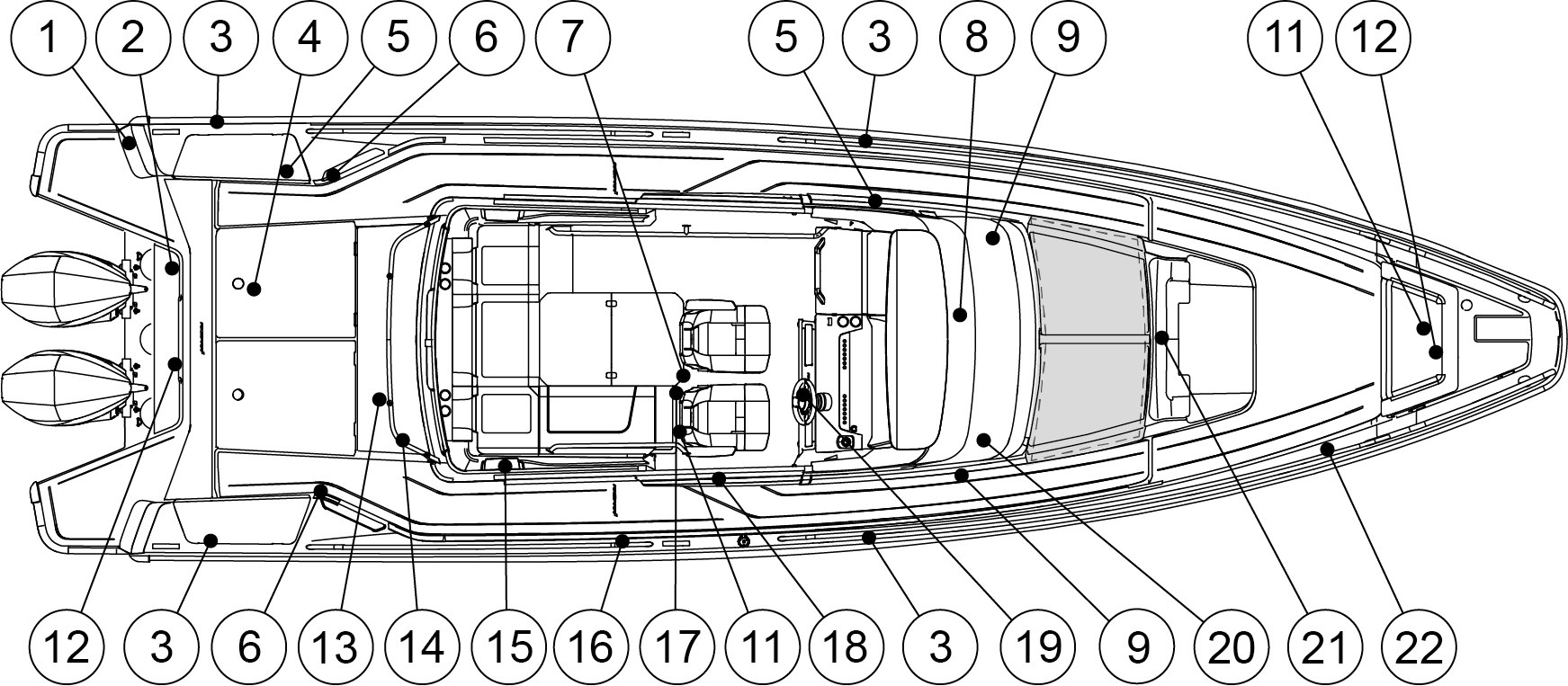
|
Position |
Label |
Description |
|---|---|---|
|
1 |
|
Danger Contact with spinning propeller will cause serious injury or death. |
|
1 |
|
Danger Carbon monoxide (CO) can cause brain damage or death. Engine and generator exhaust contains odorless and colorless carbon monoxide gas. Carbon monoxide will be around the back of the boat when engines or generators are running. Move to fresh air if you feel nausea, headache, dizziness, or drowsiness. |
|
2 |
|
Discharge of oil prohibited The federal water pollution control act prohibits the discharge of oilor oily waste into or upon the navigable waters of the United States, or the waters of the contiguous zone, or which may affect natural resources belonging to, appertaining to, or under the exclusive management authority of the Unites States, if such discharge causes a film or discoloration of the surfaces of the water or causes a sludge or emulsion beneath the surface of the water. Violators are subject to substantial civil penalties and/or criminal sanctions including fines and imprisonment. NMMA |
|
2 |
|
Liquids here. It is illegal for any vessel to dump plastic trash anywhere in the ocean or navigable waters of the United States. Annex V of the Marpol Treaty is an international law for a cleaner, safer marine anvironment., Violation of these requirements may result in civil penalty up to $25,000, fine and imprisonment. U.S. lakes, rivers, bays, sounds and 3 miles from shore Illegal to dump plastic & garbage, paper, metal, rags, crockery, glass, dunnage, food. 3 to 12 miles Illegal to dump plastic, dunnage, lining & packing materials that float. Also if not ground to less than one inch: paper, crockery, rags, metal, glass, food 12 to 25 miles illegal to dump plastic, dunnage, lining & packing materials that float Outside 25 miles illega do dump plastic State and local regulations may further restrict the disposal of garbage. |
|
3 |
|
Fastening point |
|
4 |
|
Warning Installation of maintenance free AGM batteries are only allowed in this area. |
|
5 |
|
Sink drain shutoff valve |
|
6 |
|
Fire extinguisher |
|
7 |
|
Warning Avoid serious injury or death. Unexpected seat rotation may cause ejection of occupant. Lock swivel when speed exceeds 5 mph. |
|
8 |
|
Waste tank shutoff valve |
|
9 |
|
Warning Door must be secured while vessel is underway. |
|
9 |
|
Emergency exit |
|
9 |
|
Warning Keep shut while underway. |
|
10 |
|
Danger Unplug shore power and turn off generator before removing cover. |
|
11 |
|
Pay attention to the warnings and read the manual. |
|
12 |
|
Warning Ski pole must be secured when in use. Tow rope may backlash into cockpit. Do not use to tow items such as tubes or other towables. Max tow load capacity is 130 kg. |
|
13 |
|
Notice LPG working pressure Butane: 28mbar Propane: 37mbar |
|
13 |
|
LPG shutoff valve |
|
13 |
|
Notice LPG leak test procedure
|
|
13 |
|
Warning Liquefied propane gas (LPG) is flammable and explosive. Follow these instructions to avoid injury or death from fire or explosion.
|
|
14 |
|
Warning Do not close the wetbar lid until the grill has completely cooled down. |
|
15 |
|
Warning Carbon monoxice (CO) can cause brain damage or death. Engine and generator exhaust contains odorless and colorless carbon monoxide gas. Signs of carbon monoxide poisoning include nausea, headache, dizziness, drowsiness, and lack of consciousness. Get fresh air if anyone shows signs of carbon monoxide poisoning. See owner's manual for information regarding carbon monoxide poisoning. |
|
16 |
|
Warning Gasoline vapors are explosive! Avoid serious injury or death from fire or explosion, resulting from leaking fuel. Inspect system for leaks at least once a year. Contents can be under pressure. Open slowly in a well ventilated aread. The use of fuels containing ethanol higher than 10% (E-10) can damage your engine or fuel system and will void the warranty. Never use (E-85). Open flame appliances can ignite gasoline vapors causing death or injuries from the fire or explosion. Turn off all open flame appliances when refueling. |
|
17 |
|
Caution If switch is turned off while engine is running alternator will be damaged. |
|
18 |
|
Warning Running boat with door open could induce exhaust fumes into cabin. See owners manual for instructions concerning carbon monoxide. |
|
19 |
|
Warning Use caution with skier in tow as tow rope may backlash into cockpit when released. |
|
19 |
|
NMMA certificate |
|
19 |
|
Certification plate US Design compliance with NMMA requirements and US Coast Guard safety standards. Meets EVAP standards using certified components. |
|
19 |
|
Warning Qualified operator to be in control at all times. Operation by an unqualified operator can cause loss of control. This may result in severe injury, death, or property damage. Boat stability and handling will change with weight disctribution. Read owners manual before use. |
|
19 |
|
Boatman's checklist For maximum enjoyment and safety, check each of these items before you start your engine: - Drain plug (Securely in place?) - Life-saving devices (One for every person on board?) - Steering system (Working smoothy and properly?) - Fuel system (Adequate fuel? Leaks? Fumes?) - Battery (Fully charged? Cable terminals clean and tight?) - Engine (In neutral?) - Capacity plate (Are you overloaded or overpowered?) - Electrical equipment (Lights, horn, pump, etc?) - Emergency gear (Fire extinguisher, bailer, paddle, anchor & line, signaling device, tool kit, etc.?) |
|
19 |
|
Warning Contact with spinning propeller will cause serious injury or death. |
|
19 |
|
Warning Attach shut down switch lanyard to qualified operator while engine is in operation. Uncontrolled boat may cause injury or death. Read owners manual before use. |
|
19 |
|
Fore and aft sun pads should not be used when vessel is under way. |
|
19 |
|
Press to unlock gas spring. |
|
20 |
|
Warning Carbon monoxide (CO) can cause brain damage or death. Carbon monoxide can be present in the cabin. Signs of carbon monoxide poisoning include nausea, headache, dizziness, drowsiness, and lack of consciousness. Get fresh air if anyone shows signs of carbon monoxide poisoning. Get fresh air if carbon monoxide detector alarm sounds. Carbon monoxide detector must be functioning at all times. |
|
21 |
|
Danger Leaving window open could induce exhaust fumes into cabin resulting in severe personal injury or death. |
|
21 |
|
Warning Watertight closure. Keep shut when underway. |
|
22 |
|
Warning Avoid personal injury. Stay inside deck rails (and gates) when boat is underway. |
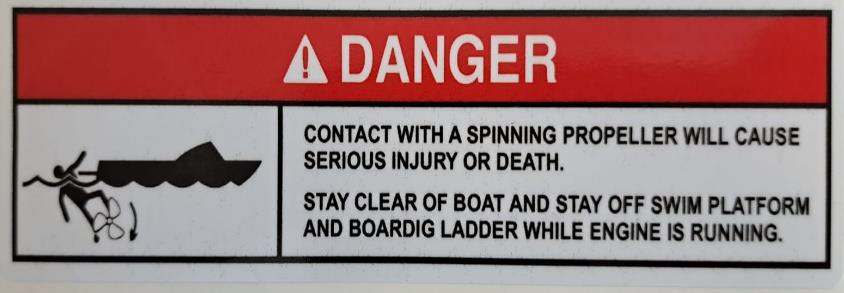

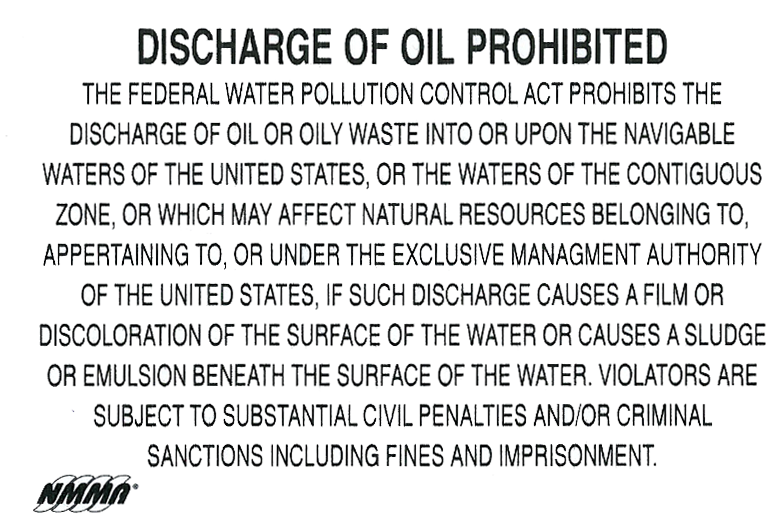
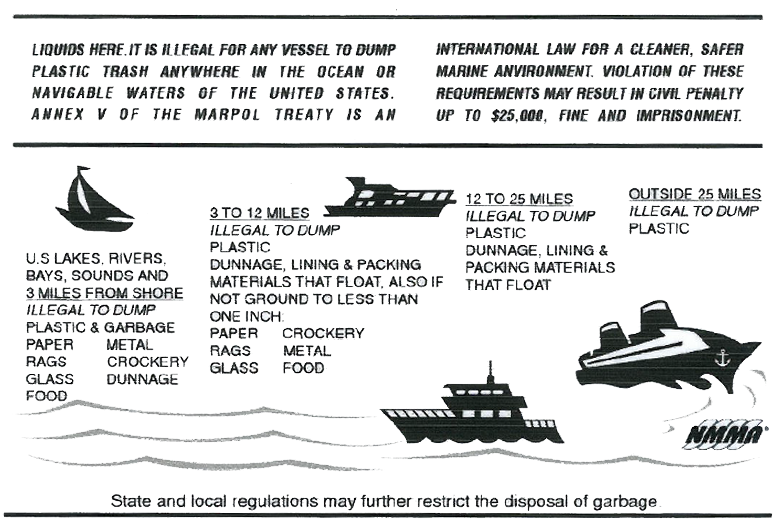
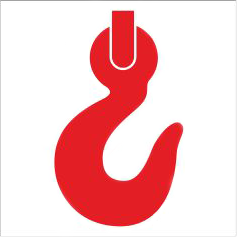

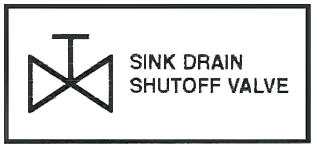
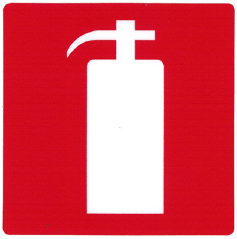
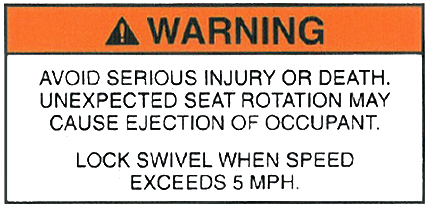
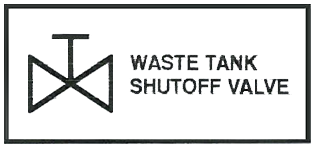
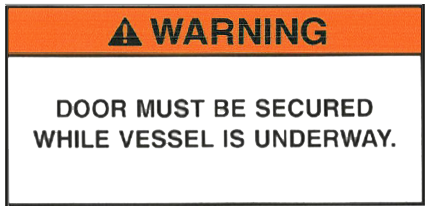
.png)
